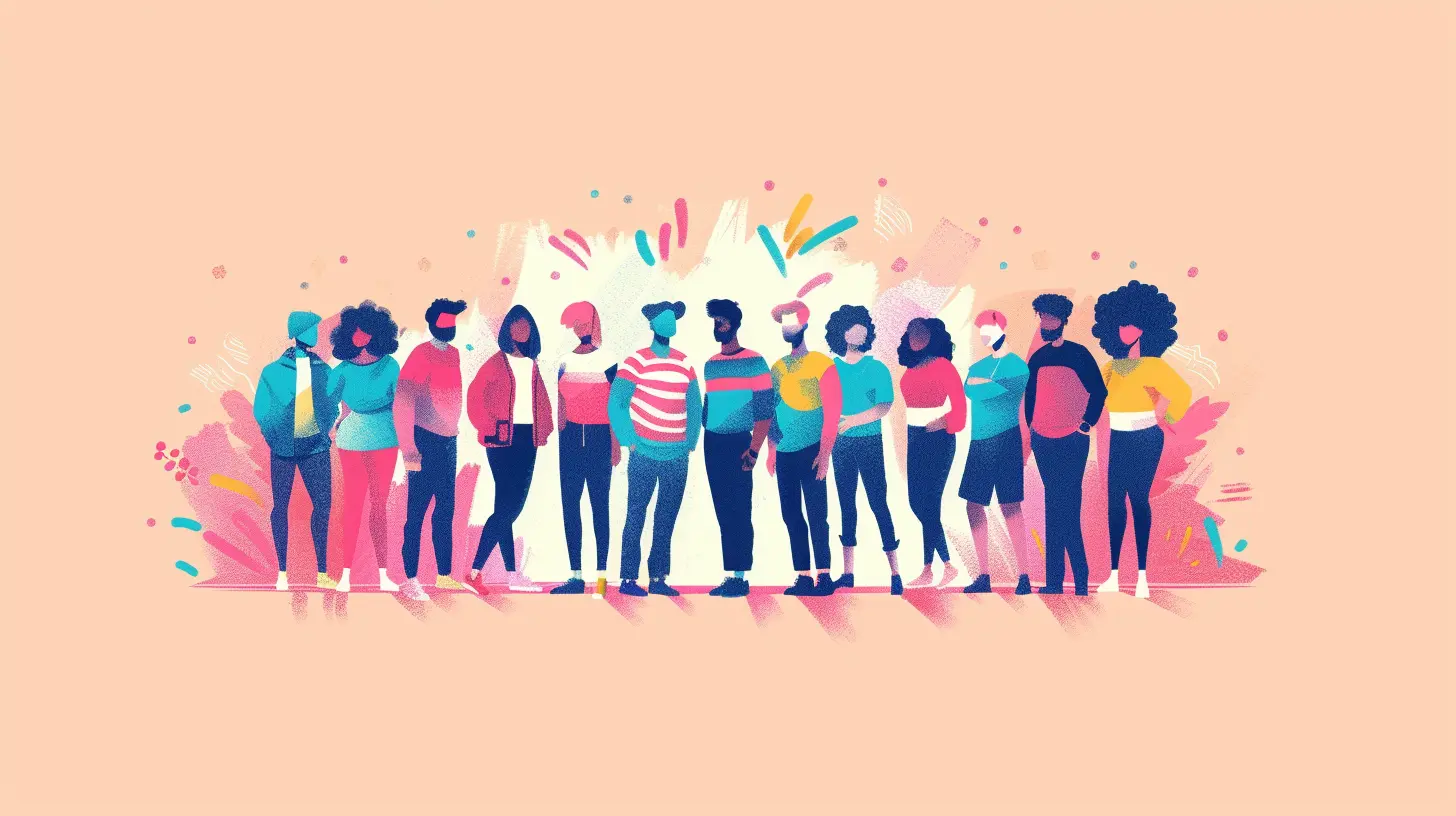26 April 2025
When it comes to building great teams, you might think technical skills or years of experience are the secret sauce. Don’t get me wrong—those things matter. But here's the kicker: even the most skilled team members can struggle to work together if empathy is missing from the equation. Yep, empathy—the ability to understand and share the feelings of others—is a game-changer for creating stronger, happier, and more productive teams.
Think of a team like a finely-tuned musical band. Each member plays a different instrument, and while technical skill helps them hit the right notes, it's empathy that makes them harmonize. Without it, you’re left with a chaotic jumble of sounds instead of a masterpiece.
Let’s dive into why empathy deserves a prime spot in your toolkit for fostering stronger team dynamics. 
What Exactly Is Empathy?
Before we get too deep into the conversation, let’s clear the air: what even is empathy? It's not just about saying "I feel you" or nodding along when someone’s having a tough time. Empathy is about genuinely putting yourself in someone else’s shoes—feeling their joys, frustrations, or worries as if they were your own.There are three main types of empathy:
1. Cognitive Empathy – Understanding what someone is feeling.
2. Emotional Empathy – Actually feeling the emotions they’re experiencing.
3. Compassionate Empathy – Taking action to help when someone’s in need.
In the context of teamwork, all three kinds of empathy matter. Why? Because a team isn’t just a group of people working toward a common goal—it's a complex web of relationships that thrives on mutual understanding. 
The Connection Between Empathy and Team Dynamics
Let’s talk about dynamics for a sec. Team dynamics are essentially how people interact, communicate, and collaborate within a group. Empathy acts like the oil that keeps the gears of those interactions running smoothly. Without it, friction builds up, misunderstandings pile on, and things can grind to a halt pretty quickly.So, how exactly does empathy work its magic in a team setting?
1. Improved Communication (Say Goodbye to Misunderstandings)
Ever had that moment in a meeting when two people are clearly not on the same page? Maybe one person’s frustrated while the other is confused. Miscommunication like this can derail entire projects.Empathy acts as a translator. When team members practice empathy, they listen—really listen—to each other, picking up on the words and emotions behind them. This leads to clearer, kinder communication where people feel heard and understood.
Think of it as the difference between sending a text with no punctuation ("Lets eat grandma") versus one with proper context ("Let’s eat, grandma"). Empathy ensures everyone gets the message the way it was intended.
2. Stronger Collaboration (The "We’re In This Together" Mentality)
Here’s the deal: nobody likes working with someone who bulldozes their way through every project. Empathy encourages collaboration by fostering respect for diverse perspectives.Imagine you’re brainstorming ideas with your team. If everyone’s just focused on pushing their own agenda, the meeting’s going to be a mess, right? But an empathetic team takes the time to understand each person’s point of view, creating an environment where everyone feels safe to contribute.
It's like baking a cake. Each ingredient (team member) brings something unique to the table. Empathy is the mixing process—it combines those ingredients into something deliciously collaborative.
3. Conflict Resolution Without the Drama
Let’s face it: conflicts are inevitable in any team. But the way those conflicts are handled can make or break team dynamics.Empathy helps de-escalate tension by encouraging people to acknowledge each other’s feelings and perspectives. Instead of finger-pointing or playing the blame game, an empathetic approach focuses on finding common ground and moving forward.
Think of empathy as the fire extinguisher in the heat of an argument. It cools things down, allowing rational problem-solving to take center stage.
4. A Boost in Trust (The Glue That Holds Teams Together)
Trust is the foundation of any strong team, and you can’t build it without empathy. Why? Because trust comes from knowing that your teammates get you—they understand your struggles, respect your boundaries, and care about your success.When team members practice empathy, they show vulnerability and openness, which encourages others to do the same. It’s a positive feedback loop. Over time, this leads to a tight-knit team that has each other’s backs, no matter what.
Imagine a tightrope walker. Trust is the safety net below, and empathy is the invisible thread that weaves that net together. Without it, you're just walking a very, very risky line.
5. Increased Morale and Job Satisfaction
Let’s be honest—nobody wants to work in a toxic environment. Being part of a team where you feel understood, supported, and valued can make a world of difference to your happiness and motivation.Empathy creates a culture where people feel comfortable sharing their highs and lows without fear of judgment. This sense of belonging can boost morale, reduce stress, and even lower turnover rates.
Happy team members = productive team members. It’s really that simple. 
How Leaders Can Foster Empathy in Teams
Here’s where the rubber meets the road: empathy doesn’t just magically appear in a team. Leaders have to cultivate it. But how?1. Lead by Example
If you want your team to be empathetic, you’ve got to walk the walk. Show genuine interest in your team members’ lives, listen actively, and address conflicts with compassion.2. Encourage Open Communication
Create a safe space for honest conversations. Whether it’s through regular check-ins, anonymous feedback tools, or team-building activities, make sure everyone feels heard.3. Invest in Emotional Intelligence Training
Empathy is a skill, and like any skill, it gets better with practice. Workshops or training sessions on emotional intelligence can help your team develop stronger interpersonal skills.4. Celebrate Diversity
Acknowledge and appreciate the unique backgrounds, strengths, and experiences of your team members. Empathy thrives in inclusive environments where diversity is celebrated, not just tolerated.5. Check Yourself (And Your Biases)
Nobody’s perfect, and we all have blind spots. Be willing to reflect on your own behavior and adjust when needed.
Common Pitfalls When Empathy is Lacking
Let’s flip the coin for a second. What happens when empathy isn’t prioritized? Well, it’s not pretty. You might see:- High Turnover Rates: People don’t stick around in environments where they feel unappreciated.
- Increased Miscommunication: Without empathy, messages are often misunderstood or ignored.
- Lingering Conflicts: Small disagreements can spiral into larger issues when nobody’s willing to see things from another perspective.
- Low Morale: A lack of empathy creates a cold, transactional atmosphere—nobody thrives in that kind of environment.
Wrapping It Up
Empathy isn’t just a nice-to-have; it’s the glue that holds teams together. It improves communication, fosters collaboration, resolves conflicts, builds trust, and creates a more positive work environment.Bottom line? If you’re looking to supercharge your team dynamics, empathy should be your starting point. It’s not always the easiest thing to practice—especially when deadlines are looming or personalities clash—but trust me, the payoff is worth it.
So, the next time you catch your team hitting a rough patch, ask yourself: are we really seeing things from each other’s perspective? Chances are, a little empathy could go a long way.


